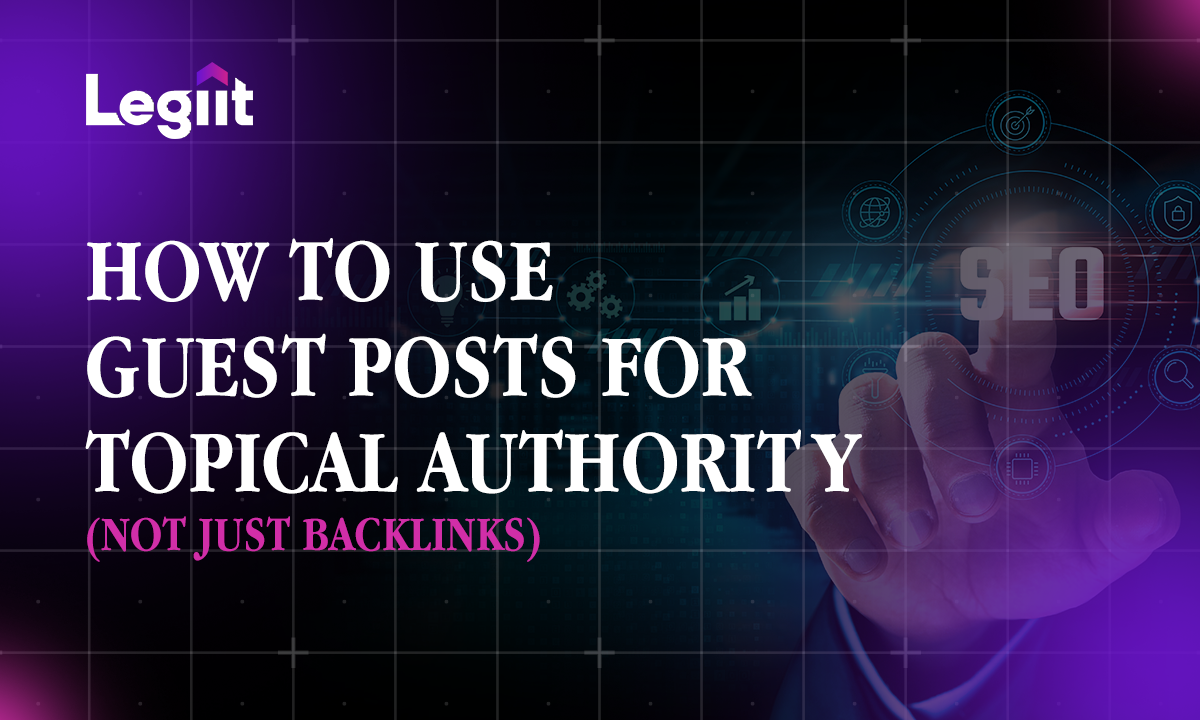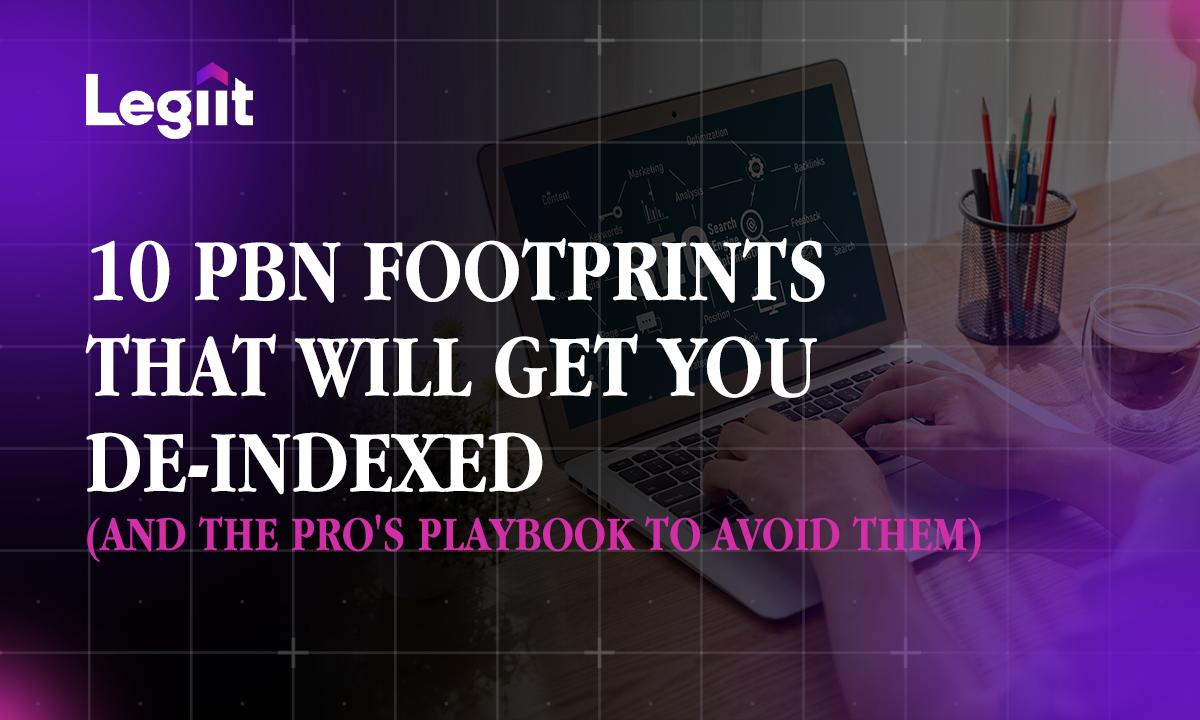In the SEO world, backlinks are pivotal in determining a website's search engine ranking. However, not all backlinks contribute positively to this goal.
This article delves into the power of backlinks; in particular, we’ll discuss bad backlinks. These so-called bad backlinks are harmful links that can jeopardize your site's SEO health and online reputation.
We'll explore what constitutes a bad backlink, how to identify them, and the crucial differences between beneficial and detrimental backlinks. Also, we'll guide you through effective strategies for removing these toxic links and maintaining a healthy backlink profile, which is essential for your website's organic ranking success.
Before jumping into this, it is worth mentioning that not all backlinks are equal. Just as good backlinks can boost your website in SERPs, bad or irrelevant backlinks can harm your site’s ranking. Also important but not discussed in this article are link velocity, niche edits, guest blog posts, and other types of backlinks.
What are Bad Backlinks?

In the SEO world, every website strives for the top spot in search engine results (SERPs). However, a hidden threat lurks for those who work on actively building backlinks. These are so-called bad backlinks that can do more harm than good. These links, originating from low-quality or irrelevant websites, pose a significant danger to your website's authority and visibility.
Think of them (bad backlinks) as digital parasites, siphoning away your website's credibility and hindering its ability to attract organic traffic. Often disguised amidst seemingly harmless and beneficial links, they can be difficult to detect without the appropriate tools. This is where backlink checker tools are indispensable weapons in your digital arsenal.
These tools reveal the true nature of each backlink, exposing those that contribute negatively to your website's health. Armed with this knowledge, you can take decisive action to mitigate the damage.
One effective strategy is to contact the website owners and request link removal. Engaging in open communication and demonstrating the detrimental impact of their link can often lead to a positive outcome.
Seasoned SEOs will find that Google Search Console is a powerful tool for finding bad backlinks and submitting a disavow file (more about this later). By submitting a list of unwanted backlinks, you inform Google to disregard their influence on your website's ranking.
However, the battle against bad backlinks extends beyond mere elimination. Building a strong foundation of high-quality content, fostering genuine connections with other websites, and earning positive links organically are crucial steps toward establishing your website as a trustworthy and authoritative source.
Identifying Bad Backlinks
We have already established that bad backlinks can drag your website down in SERPs. In many cases, it may even prevent your website from ranking in search. However, since backlinks are important for good search engine rankings, it is one thing you can't do without.
In this section, we'll discuss how to do a backlink audit to identify bad incoming links pointing to your website, which could potentially harm your standing on search engine results pages.
Utilize Backlink Checker Tools
These tools scan the web, revealing the hidden network of links pointing to your website. Tools like Ahrefs, Moz, and SEMrush provide comprehensive insights into the quality and relevance of these backlinks, allowing you to identify potential threats.
Analyze Anchor Text
The text displayed when hovering over a link, known as anchor text, can be a revealing clue. Relevant and natural-looking anchor text suggests a positive link, while spammy or keyword-stuffed anchor text raises red flags. Most, if not all, of the tools we mentioned will also show the anchor text pointing to your website.
Investigate the Linking Website
Is it a reputable source with relevant content? Or is it filled with spam, malware, or irrelevant information? Websites with poor reputations often harbor bad backlinks because search engines don't like those websites, or they are labelled as being spammy. These so-called spammy links can, at best, probably cause your website to lose rankings and, at worse, trigger a penalty especially if all the links are spammy.
Monitor Domain Authority
Domain Authority (DA) is a metric that indicates a website's overall authority and influence. A low DA website linking to you is less valuable and potentially harmful than a high DA website. However, DA is just one metric, and getting a backlink from a low DA site does not make them bad links or low-quality links. If the website is relevant, your niche domain authority does not matter as much.
Look for unnatural patterns
A sudden influx of backlinks from unknown or irrelevant websites is a red flag to search engines and can cause a website's search engine rankings to tank. For instance, reciprocal links can be an instant red flag. This could signify a paid link scheme, a manipulative tactic, or another method of building unnatural links that can severely damage your website's ranking.
Remember, vigilance is key. Regularly monitor your backlink profile and identify potential low-quality backlinks to safeguard your website's health and reputation. This is also important to maintain good search rankings.
Bad Backlink Practices That Can Tank Your Search Engine Rankings
The quest for high search engine rankings can be tempting, but some methods can have disastrous consequences. When it comes to backlinks, the allure of quick results can often overshadow the importance of ethical and sustainable practices. To avoid Google's algorithmic wrath and ensure your website's long-term success, steer clear of these harmful backlink methods:
Paid-Link Schemes
Buying backlinks might seem like a shortcut to success, but it's a blatant violation of Google's Webmaster Guidelines. Participating in paid link schemes involves purchasing links from irrelevant or low-quality websites. These links are easily identifiable by Google's algorithms, leading to severe penalties, including the website being deindexed and demotion in rankings.
Participating in Link Exchange Schemes
Reciprocal link exchanges, where websites trade links, were once popular. However, Google views this as a manipulative attempt to inflate link popularity and penalizes websites engaging in such practices. A healthy backlink profile should come naturally from organic relationships and high-quality content.
Link Spam
Bombarding websites with comments containing irrelevant links is not only ineffective, but it also paints your website in a negative light. Similarly, spamming forums and guestbooks with links is unethical and can significantly damage your website's reputation. It is worth mentioning that Google's Panda Update penalized websites engaging in link spam to manipulate search engine rankings.
Low-Quality Link Networks
Participating in private blog networks (PBNs) or other low-quality link networks might seem appealing, but Google's algorithms often flag these networks. These networks are created solely to manipulate link profiles and offer no real value to users. However, like all things in the SEO world, there are high-quality PBNs that Google can have a tough time tracking and the cheap $1 links that will almost certainly penalize your website because they are blatantly spammy backlinks. In other words, the linking sites are of low quality.
Keyword-Stuffed Anchor Text
While using relevant keywords in anchor text is acceptable, overdoing it can raise suspicion. Google identifies websites with excessively keyword-stuffed anchor text as manipulative, leading to potential penalties. Focus on creating natural and descriptive anchor text that accurately reflects the linked page's content.
Unethical Link Building Services
Beware of any service promising quick and easy backlinks. These services often employ black-hat techniques that will ultimately harm your website. Choose to build your backlink profile organically through genuine relationships and high-quality content creation.
Remember, building a solid backlink profile takes time and effort, but it's crucial for sustainable success. By focusing on high-quality links from relevant websites and avoiding these harmful practices, you can ensure your website enjoys a positive reputation and a healthy presence in search engine results.
How Do I Know If My Backlinks Are Bad?

It is an honest question that's not easy to answer. The most common question is how search engine spiders know if a link is good or bad? Google does not tell us how its spiders can distinguish between good or bad links or how it can identify bad backlinks.
However, it is worth knowing what to look out for when auditing a site's backlink profile if you want to remove toxic backlinks.
Here is what you will want to keep in mind, especially when dealing with paid links:
Good Backlinks:
- Come from high-quality, relevant websites.
- Have natural, relevant anchor texts.
- Are acquired organically and ethically.
Bad Backlinks:
- Originate from low-quality, spammy websites.
- Use irrelevant or overly optimized anchor texts.
- Are often part of paid link schemes or unnatural link-building practices.
The Impact of Bad Backlinks
Many bad backlinks can trigger a manual action (or Google penalty) against your site, leading to suppressed search rankings or even removal from search results. This is because many toxic backlinks suggest systematic spamming, which is against Google's guidelines.
Should I Remove Bad Backlinks From Google Search Console?
Removing bad backlinks or bad link removal is generally recommended to protect your website's SEO health. While Google has become better at identifying and discounting these links, they can still pose a risk, especially in large volumes.
However, Google cautions webmasters about using their removal tool to remove bad links as it can have negative implications. This is something we'll go into in the next section.
How Do I Remove Bad Backlinks From Google?
So, the question is: how to get rid of bad backlinks? The first line of attack is direct communication. Reach out to the website owners hosting the bad backlinks. Explain their link's negative impact on your website and request its removal. A polite and professional approach often leads to a successful resolution.
Reach out multiple times a week apart. If there is no response, then you can move on to disavow links.
Disavowing Bad Backlinks: A Powerful Tool with Potential Drawbacks

Google's Disavow Tool offers a powerful solution to remove bad backlinks from your website's backlink profile. However, wielding this tool requires caution as it can potentially harm your SEO efforts:
Benefits of Disavowing Backlinks:
- Eliminates the negative impact of bad backlinks on your ranking.
- Protects your website from algorithmic penalties.
- Allows you to take control of your website's online reputation.
Drawbacks:
- Incorrectly disavowing good backlinks can significantly damage your ranking.
- Misusing the tool can lead to Google ignoring your disavow requests.
- The process is complex and requires careful analysis.
- Not everyone can accurately understand how to know if a link is bad.
How to use Google's Disavow Tool?
Start by collecting backlink data. Use backlink checker tools to identify low-quality or irrelevant links pointing to your website.
- Gather Information: Collect URLs of the bad backlinks and identify the websites hosting them.
- Create the Disavow File: Create a text file with one URL per line, starting with "domain:" for domain-level disavow or "http://www.example.com" for URL-level disavow.
- Go to Google Search Console: Sign in to your Google Search Console account and select the property you want to manage.
- Access the Disavow Links Tool: Click on the "Disavow links" option under the "Search Appearance" section.
- Upload the Disavow File: Click on the "Choose file" button and select the disavow file you created.
- Submit the Disavow Request: Click on the "Submit" button to send your disavow request to Google.
Best Practices for Managing Backlinks
- Regular Monitoring: Regularly audit your backlink profile to identify and address any issues.
- Focus on Quality Over Quantity: Prioritize gaining high-quality backlinks from reputable sources.
- Engage in Ethical Link Building: Avoid black-hat SEO tactics and focus on organic, ethical link-building strategies.
Conclusion
Bad backlinks can significantly impact your website's SEO performance. You can maintain a healthy and effective SEO strategy by understanding what they are, how to find bad backlinks, and the steps to mitigate their impact. Regular monitoring and ethical link-building practices are crucial to safeguarding your site against the potential risks of toxic backlinks.
FAQs
Q. How do I remove bad backlinks from Google?
A. You can do this by using Google's Disavow tool.
Q. Should I remove bad backlinks?
A. Yes, it is imperative to remove bad backlinks.
Q. How do I know if my backlinks are bad?
A. Tools such as SEMrush and Moz, will often show a spam score which hints at the quality of the backlink.













 Download
Download